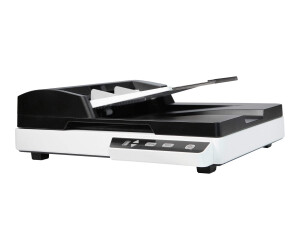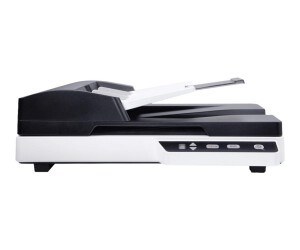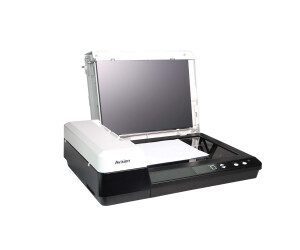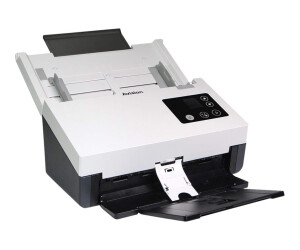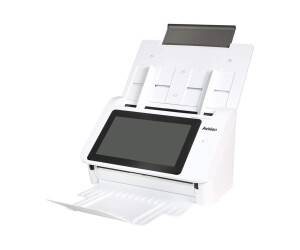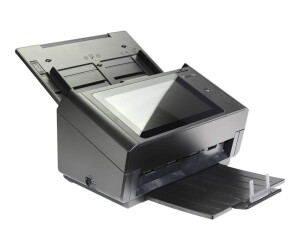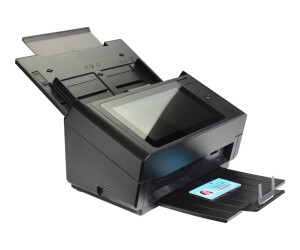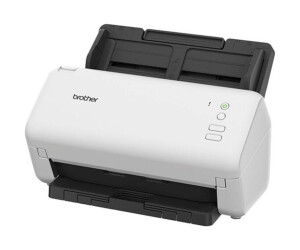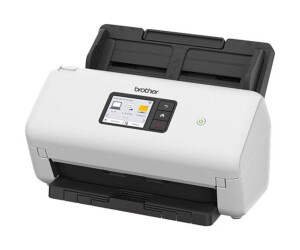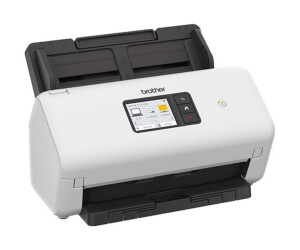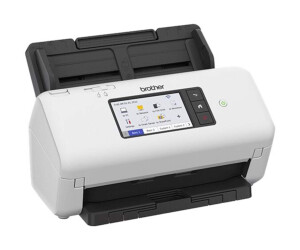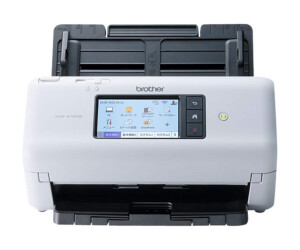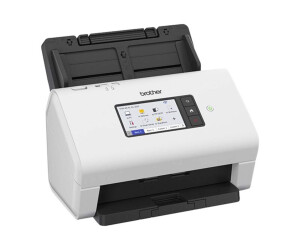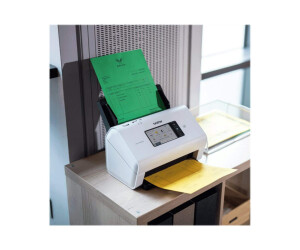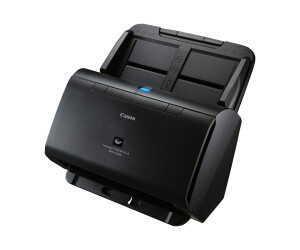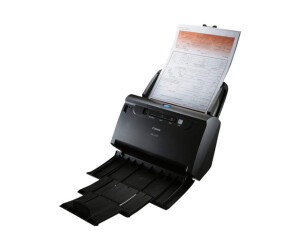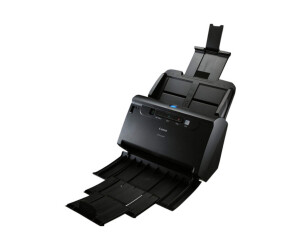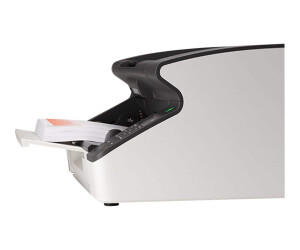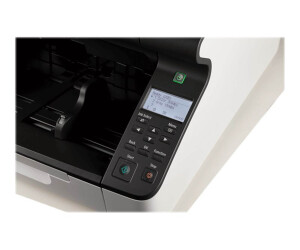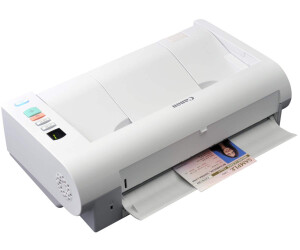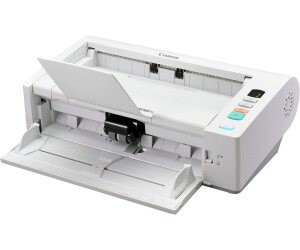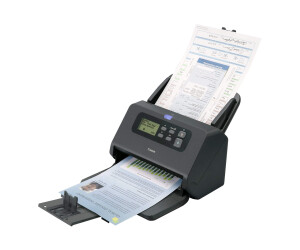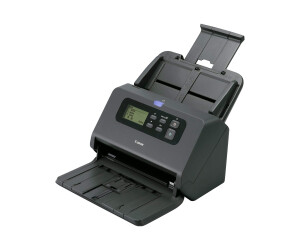- /
- Computersystems
- /
- Scanner
- /
- Document Scanner
Document Scanner
Document Scanner
Document scanners are a practical and useful tool for businesses, students, and individuals who want to scan and digitize documents. Compared to traditional scanners, document scanners are typically portable, easy to use, and do not require additional power sources.
Document scanners come in various sizes and shapes, from small and portable handheld scanners to larger desktop models. Many modern document scanners offer a variety of features and options to improve usability and efficiency.
Some of the key features of document scanners include:
Automatic document feeder (ADF):
The automatic document feeder (ADF) is a feature that is integrated into many document scanners and greatly facilitates the scanning process. Unlike flatbed scanners, where each page must be manually placed and scanned, document scanners with ADF can automatically scan multiple pages without the need to individually insert each page.The ADF function saves time and effort by allowing users to quickly and efficiently scan large quantities of documents. This feature is particularly useful for businesses that need to scan a large number of documents daily, such as law firms, medical facilities, and government agencies.
Another advantage of the ADF function is that it minimizes errors and delays that can often occur with manual scanning. The automatic feeding of multiple pages prevents pages from being skipped or scanned twice, saving time and effort.
However, it should be noted that document scanners with ADF are usually more expensive than flatbed scanners or document scanners without ADF. Additionally, they are slightly larger and heavier than other scanner models due to the mechanics of the automatic feeder.
Duplex scanning:
Duplex scanning is a function that allows a document scanner to scan both sides of a document at the same time. Unlike manually scanning double-sided documents, where each side has to be scanned individually and then manually assembled, the duplex scanner can scan the document automatically in one pass. This saves time and effort and makes the scanning process much more efficient.
This feature is particularly useful for businesses or individuals who work with double-sided documents, such as contracts, application forms, or operating instructions. With duplex scanning, these documents can be digitized quickly and easily without the need for manual steps. Duplex scanning is also invaluable in work environments where time and efficiency are of the utmost importance.
There are various types of duplex scanners that can be selected depending on the user's requirements and needs. Some scanners can enable both automatic feed scanning and manual scanning of single pages. Others can scan a higher number of pages in one pass, making the scanning process even more efficient.
Optical character recognition (OCR):
Optical character recognition (OCR) is a technology that allows document scanners to recognize text on scanned documents and convert it into editable text files. OCR is particularly helpful when you want to digitize documents that need to be later edited or searched, such as contracts or invoices.Through OCR technology, the scanner can automatically recognize text and convert it into a text format that can be edited with word processing programs. This means you can copy text from scanned documents and paste it into other documents or edit the text within the scanned file itself.
OCR is also useful when you need to search through scanned documents. By converting text into editable text files, you can search for specific words or phrases and quickly find relevant information. This saves time and makes the work process more efficient.
Document scanners with OCR technology are particularly useful for businesses that need to digitize and archive large volumes of documents, such as invoices, contracts, or employee records.
Cloud integration:
Cloud integration is a feature available in many modern document scanners that allows users to save and synchronize scanned documents directly to the cloud. The cloud is a virtual storage space that is accessible over the internet, allowing users to access their data from anywhere and any device.With cloud integration, users can upload scanned documents directly to their preferred cloud storage services such as Google Drive, Dropbox, or OneDrive and access their documents without the need to store them on the device. This feature is particularly useful for people who are often on the go and need quick access to their documents without physically accessing their scanner.
Cloud integration also provides a secure way to share documents, as users can easily share files with other people without the need to physically copy or email them. Additionally, cloud integration allows for collaboration on documents, with multiple users being able to access and edit the same document at the same time.
Modern document scanners:
Modern document scanners are generally equipped with various interfaces and connectivity options to meet the needs of different users. The most common interfaces are USB, Wi-Fi, Ethernet, and Bluetooth. USB connections allow for fast and reliable data transfer between the scanner and a computer or mobile device. Wi-Fi and Ethernet provide wireless connection options that can connect the scanner to a network or a cloud service. Bluetooth is a wireless technology commonly used for use with mobile devices and tablets.These various interfaces and connectivity options offer users a high level of flexibility when using the scanner. Users can easily and conveniently scan and save documents from their preferred devices. By integrating with various cloud services, scanned documents can also be uploaded directly to the cloud to facilitate sharing and access from any device.
In addition, some scanners also offer mobile connectivity options, such as Wi-Fi Direct or NFC (Near Field Communication), to establish a wireless connection with mobile devices. This allows users to use their scanners on the go without the need for a computer or network.
Mobile document scanners:
Mobile document scanners are compact and portable devices designed for use on the go. Unlike stationary scanners, they are lightweight and easy to transport. They offer a variety of features that allow users to scan documents quickly and easily, regardless of their location.Mobile document scanners are often equipped with wireless features that allow for wireless connection to mobile devices or laptops. These features may include Bluetooth, Wi-Fi, or NFC to establish a fast and easy connection. Some mobile scanners even offer a built-in memory card, allowing you to store documents directly on the scanner without the need to transfer them to another device.
Another feature of mobile document scanners is their user-friendliness. Many scanners have an intuitive user interface that makes it easy to scan and save documents. Some scanners even offer automatic settings for different types of documents, so you don't have to worry about fine-tuning the settings.
Mobile document scanners are ideal for people who are frequently on the go, such as business travelers or salespeople. They are also useful for people who work from home or for students who work on campus. Mobile scanners are usually more cost-effective than stationary scanners, yet still offer a variety of features that are sufficient for most users.
Automatic image optimization:
Automatic image optimization is a feature that is available on some document scanners and can help improve the quality of scanned documents. This feature uses algorithms and sensors to analyze the image and automatically make adjustments to achieve the best result. One example is automatic color correction, which can compensate for color errors and improve color accuracy. Another feature is image cropping, which automatically detects and crops the edge of the document to focus on the text. Removing background noise is also a useful feature as it can remove noise or interference that may interfere with the readability of the document.Versatility:
The versatility of document scanners is one of their greatest strengths. They can be used for a wide range of applications, such as scanning business cards, receipts, photos, drawings, or even three-dimensional objects. Many scanners have various settings and modes to adapt to different types of documents. This allows users to scan different types of documents and tailor them to their specific requirements. For example, a document scanner may be equipped with a special mode for scanning business cards, which allows for automatic labeling of fields such as name, address, and phone number to ensure easier processing. Another scanner may have special settings to scan photos or drawings that require higher color accuracy or resolution. The versatility of document scanners makes them an essential tool in many fields, such as offices, archives, libraries, art studios, or even in the medical field.
Compatibility:
The compatibility of a document scanner is an important factor to consider when selecting a scanner. It is important to ensure that the scanner is compatible with the operating system and applications you want to use. Some scanners may only be compatible with Windows computers, while others can work with both Mac and Windows computers. There are also scanners that are compatible with different operating systems and mobile devices such as tablets and smartphones.
Most scanners come with drivers and software that ensure seamless integration with your computer or mobile device. However, it is important to ensure that the scanner also works with the applications you want to use to process the scanned documents. For example, if you want to use OCR software to convert scanned documents into editable text files, you need to ensure that the scanner is compatible with this software.
It is also important to check if the scanner is compatible with common file formats such as PDF or JPEG. Some scanners can also scan in other file formats, such as Word or Excel. If you plan to use the scanned documents in different applications, you should ensure that the scanner is compatible with the file formats you use.
Document scanners are also available in different price ranges, from affordable entry-level models to high-end models with advanced features and higher scan resolutions. Choosing the right document scanner depends on your individual requirements, such as the size of the documents to be scanned, the frequency of scanning, and your budget.Document scanners are used in various fields, including:
- Offices: Document scanners are very useful in offices as they enable the digitization of paper documents and save space. In addition, digitized documents can be easily archived and shared across different devices.
- Government agencies: Document scanners are used in government agencies to archive and manage important documents such as birth certificates, passports, and tax records. This way, the documents can be made safely and easily accessible.
- Healthcare: In healthcare, document scanners are used to digitize and manage medical records, patient files, and insurance documents. This enables doctors and hospitals to quickly access important information and manage it safely and effectively.
- Education: In educational institutions such as schools and universities, document scanners are used to archive and manage grades, diplomas, and certificates. This way, students and teachers can easily access their documents and store them securely.
- Legal sector: In the legal sector, document scanners are used to digitize and manage legal documents such as contracts, court records, and certificates. This enables lawyers and courts to quickly access important information and manage it safely and effectively.
Overall, there are many different applications for document scanners. They are an indispensable tool in many industries and help to increase efficiency, save space, and store important documents securely. All in all, document scanners are an excellent investment for anyone who wants to digitize and archive their documents. With their numerous features and options, document scanners can increase efficiency, improve organization, and save time and effort.
Advantages and disadvantages of document scanners:
Advantages:
- Time-saving: Documents can be quickly and easily digitized without the need for manual input or copying.
- Space-saving: Digital copies of documents can be stored in a space-saving manner instead of storing physical copies.
- Portability: Some document scanners are portable and allow for scanning and digitizing documents on the go.
- Improved security: Digital copies of documents can be protected with passwords or other security measures to prevent unauthorized access.
- Search function: Digital documents can be searched to quickly and easily find specific information.
Disadvantages:
- Cost: Document scanners can be expensive, especially if they offer special features such as duplex scanning or OCR text recognition.
- Incorrect recognition: Text recognition may contain errors, especially for handwritten notes or poor scan quality.
- Poor image quality: Some cheaper models may have poor scan quality, resulting in unreadable or blurry scans.
- Storage space: Digital documents require storage space on computers or other storage devices, which can lead to additional costs.
Conclusion:
In summary, document scanners are an extremely useful technology that can help facilitate the digitization of documents and improve access to information. With various features such as automatic document feeding, duplex scanning, OCR technology, and cloud integration, document scanners can make the scanning process more efficient and time-saving. Additionally, they offer a variety of interfaces and connectivity options to enable seamless integration with your preferred devices. Whether for home or office use, there is a wide selection of document scanners that are suitable for various applications and needs. However, it is important to carefully consider which features and characteristics are best suited for your requirements to achieve the best result.

